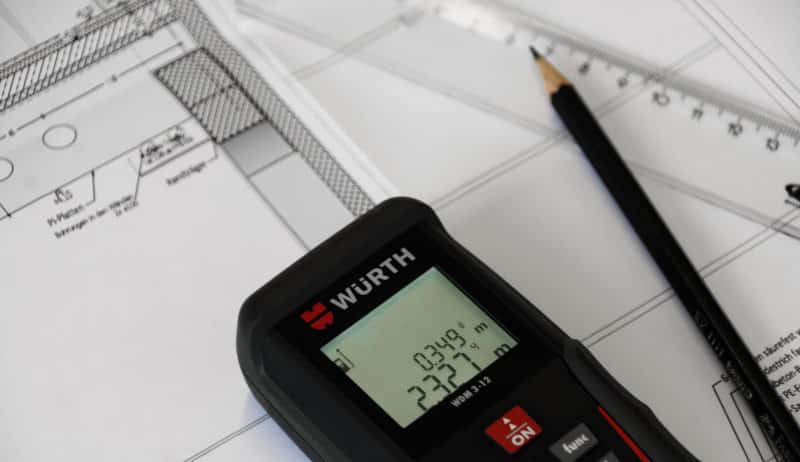A product specification sheet, also called “Spec Sheets”, is a detailed document that outlines the specific features and characteristics of a product. It provides a comprehensive summary of the product’s technical specifications, performance requirements, packaging and labeling instructions, compliance requirements, and warranty and support information.
Creating a great product specification sheet is essential for any manufacturer, supplier, or retailer looking to market their product effectively and efficiently. A well-crafted product specification sheet can help ensure that all stakeholders have a clear understanding of the product, its purpose, and how it should be used.
In this article, we will explore the key elements of a great product specification sheet and provide tips on how to create one that will meet your business needs.
Key Elements of a Clear Product Specification Sheet
A product specification sheet is an important tool for any business that manufactures, distributes or sells products. It helps to ensure that all stakeholders have a clear understanding of the product’s technical features, performance requirements, packaging and labeling instructions, compliance requirements, and warranty and support information. In this section, we will explore each of these key elements in more detail.
Product Description
The product description is a brief summary of the product, including its purpose, target market, and key features. It should be written in a way that is easy to understand for anyone who is not familiar with the product.

The purpose of the product should be clearly stated, as well as any intended use cases or target markets. The key features of the product should also be highlighted, including any unique or innovative aspects that set it apart from other products in the same category.
Technical Specifications
The technical specifications of a product are the specific details about its size, weight, materials, manufacturing process, and other technical aspects. This section should include detailed information about the product’s physical attributes, such as dimensions, weight, and material composition. It should also provide information about the manufacturing process, including any specialized equipment or techniques used to produce the product. The technical specifications section should be as detailed as possible to provide stakeholders with a complete understanding of the product’s design and manufacturing process.
Performance Requirements
The performance requirements section outlines the minimum performance standards that the product must meet. This includes durability, safety, and functionality standards that the product must meet to be considered effective and useful. This section should also include any performance testing or certifications that the product has undergone to ensure that it meets the necessary standards. The performance requirements section is particularly important for products that have safety implications or that are used in regulated industries.
Packaging and Labeling Requirements
The packaging and labeling requirements section provides information about how the product should be packaged and labeled for shipping, storage, and retail display. This includes information about the type of packaging materials that should be used, as well as any labeling requirements such as barcodes, product codes, and safety labels. This section should also provide guidance on how the product should be stored to maintain its quality and safety.
Compliance Requirements
The compliance requirements section outlines any legal or regulatory requirements that the product must meet. This includes safety standards, environmental regulations, and any other applicable laws or regulations.

This section is particularly important for products that are sold in regulated industries, such as food, medical devices, or electronics. Compliance requirements can vary by country or region, so it is important to do research and ensure that all applicable regulations are included in the product specification sheet.
Warranty and Support
The warranty and support section provides information about the product’s warranty, return policy, and customer support options. This includes information about any warranties or guarantees that come with the product, as well as instructions for how to make a warranty claim or return a product. This section should also provide information about how customers can contact the manufacturer or supplier for support or assistance with the product.
Tips for doing a Comprehensive Specification Sheet
Creating a great product specification sheet requires careful planning and attention to detail. Here are some tips to help you create a product specification sheet that meets your business needs:
- Involve stakeholders from different departments: When creating a product specification sheet, it is important to involve stakeholders from different departments, such as engineering, design, and marketing. This can help to ensure that all aspects of the product are covered and that the final product specification sheet is comprehensive and accurate.
- Use clear and concise language: The product specification sheet should be written in a way that is easy to understood by all stakeholders, including those who are not familiar with the technical aspects of the product. Use clear and concise language to avoid confusion and ensure that everyone has a complete understanding of the product.
- Include relevant images and diagrams: Visual aids can help to clarify complex technical information and make the product specification sheet more engaging and informative. Consider including relevant images and diagrams that illustrate key aspects of the product, such as its design or manufacturing process.
- Keep the product specification sheet up to date: As the product evolves over time, it is important to update the product specification sheet to reflect any changes. This can help to ensure that everyone has access to the most current and accurate information about the product.
- Provide training on how to use the product specification sheet: Once the product specification sheet is complete, it is important to provide training to stakeholders on how to use it effectively. This can help to ensure that everyone is able to access and interpret the information in the product specification sheet correctly.
- Get feedback and make revisions: Finally, it is important to get feedback from stakeholders on the product specification sheet and make revisions as needed. This can help to ensure that the final product specification sheet is comprehensive, accurate, and meets the needs of all stakeholders.
Advantages of using detailed specs for manufacturers in Vietnam
Clear and Concise Information
One of the most significant advantages of using a product specification sheet is that it provides clear and concise information about a product. This can be beneficial for manufacturers who need to communicate product details to their engineering team, suppliers who need to understand the product’s features to create packaging, and customers who need to know more about the product before making a purchase.

With all the essential information in one place, a product specification sheet makes it easy for stakeholders to understand the product’s features quickly and efficiently.
Compliance with Regulations
Product specification sheets can help ensure compliance with regulatory requirements and industry standards. These sheets contain information about compliance requirements, including safety requirements, environmental regulations, and other relevant regulations or standards. By including this information in the product specification sheet, manufacturers can help ensure that their product meets regulatory requirements and is safe for use by customers.
Establishes Trust and Credibility
Product specification sheets also help establish trust and credibility with customers. By providing warranty and support information, customers can feel confident in their purchase and understand what kind of support they can expect if there are any issues with the product. This builds trust and credibility, which can lead to repeat business and positive word-of-mouth recommendations.
Differentiation from Competitors
In today’s competitive marketplace, it is essential to differentiate your product from competitors. A product specification sheet can help highlight the unique features and benefits of your product, making it stand out from competitors. By showcasing the features that make your product unique, you can help attract customers who are looking for specific features or benefits in a product.
Time and Cost Savings
Using a product specification sheet can also save time and reduce costs. By providing all the necessary information in one place, businesses can avoid duplicating efforts and wasting time searching for information across multiple sources. This can help streamline processes and reduce the time it takes to bring a product to market, saving businesses time and money.
Common Mistakes to Avoid When Creating a Spec Sheet
Incomplete or Inaccurate Information
One of the most common mistakes businesses make when creating a product specification sheet is including incomplete or inaccurate information.

This can lead to confusion among stakeholders and result in delays in the product development process. To avoid this, it is important to review the sheet multiple times to ensure all the necessary information is included and that it is accurate.
Lack of Clarity and Consistency
Another common mistake is a lack of clarity and consistency in the product specification sheet. It is essential to use clear and concise language to ensure that stakeholders can understand the information presented. Additionally, consistency in formatting and organization can make the sheet more accessible and easier to read.
Poor Organization
A poorly organized product specification sheet can be challenging to navigate and understand. It is important to structure the sheet in a logical and organized manner that allows stakeholders to quickly find the information they need. This can be achieved by grouping related information together and using headings and subheadings to break up sections of the sheet.
Failure to Include Compliance Requirements
Compliance requirements are an essential component of a product specification sheet, and failure to include them can lead to regulatory issues and safety concerns. It is important to research and understand the relevant compliance requirements for the product and include them in the sheet.
Neglecting to Update the Spec Sheet
Product specification sheets should be updated regularly to reflect any changes or updates to the product. Neglecting to update the sheet can result in inaccurate information being presented to stakeholders and can lead to delays or safety concerns. It is important to establish a process for updating the sheet regularly and ensuring that all stakeholders have access to the most up-to-date version.
How to Make a Good Specification Sheet in Vietnam
When creating a product specification sheet in Vietnam, it is essential to understand the local regulatory requirements and cultural nuances to ensure that the sheet meets the needs of all stakeholders. Here are some tips and best practices for creating a product specification sheet in Vietnam:
1. Research Local Regulations
Vietnam has specific regulations for product safety and labeling requirements, and it is essential to research and understand them before creating a product specification sheet. This includes understanding the local standards for product safety, packaging, and labeling. For example, the Vietnamese government requires that all imported goods are labeled in Vietnamese, and that the label includes information such as the product name, manufacturer, and ingredients.
2. Use Clear and Concise Language
When creating a product specification sheet in Vietnam, it is important to use clear and concise language. Avoid using technical terms and jargon that may not be understood by stakeholders. Instead, use simple and easy-to-understand language to ensure that all stakeholders can understand the information presented. This is particularly important when working with stakeholders who may not be fluent in English, such as local suppliers or distributors.
3. Be Mindful of Cultural Nuances
Vietnamese culture places a high value on relationships and personal connections, and it is important to be mindful of this when creating a product specification sheet. Building strong relationships with stakeholders and showing respect for local customs and traditions can go a long way in creating effective communication and collaboration. For example, it may be appropriate to include a brief introduction or greeting in Vietnamese at the beginning of the product specification sheet.
4. Work with Local Experts
When creating a product specification sheet in Vietnam, it is crucial to work with local experts who are well-versed in the regulatory requirements and cultural nuances of the region. These experts can provide valuable insights and guidance to help ensure that the sheet effectively communicates the necessary information to stakeholders while meeting local requirements. One such of them is MoveToAsia, a trusted provider of business consulting and relocation services in Vietnam. Partnering with local experts like MoveToAsia can help businesses avoid common mistakes and streamline the process of creating a successful product specification sheet in Vietnam.
5. Organize and Format the Sheet Effectively
An effective product specification sheet should be well-organized and easy to read. Use headings, bullet points, and tables to break up the information and make it easier to digest. Consider including diagrams or images to illustrate technical information or product features. It is also important to ensure that the sheet is formatted correctly and is visually appealing. This can help make the sheet more engaging and easier to understand for stakeholders.
In summary, creating a great product specification sheet requires attention to detail, clear and concise communication, and a focus on meeting the needs of all stakeholders. Whether you are a manufacturer, distributor, or seller of products, a comprehensive and accurate product specification sheet can help you showcase your products, meet compliance requirements, and provide essential information to your customers. By following the best practices outlined in this article, you can create a product specification sheet that is effective, efficient, and user-friendly, helping you to drive sales and maintain customer satisfaction. So take the time to create a great product specification sheet for your business today, and watch your products soar

